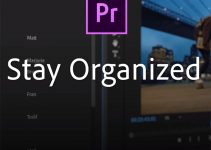Sony has a complete Cinema Line at this point, going from the mirrorless-like FX3, to the compact FX6, then the pro-level FX9, and peaking with the cinematic VENICE. As the cameras get more and more different each step up you take, it is very nice that Sony has consolidated the look and feel of the imagery with Picture Profiles – the most recent in the spotlight being S-Cinetone.
The folks at CVP have all four of these cameras and do an interesting take on the lineup. They also make sure to provide some specific insight on the character and use of S-Cinetone. If you want to make the most of any of these cameras you will want to take a look.
What is S-Cinetone?
Breaking down the history of S-Cinetone starts with the VENICE. This camera was when Sony took a major shift and emphasized the color rendering of their cinema cameras. While this specific look is unique to the VENICE, they wanted to bring a version of those colors to all the other cameras in the line and did that via the S-Cinetone profile. It’s a cinematic profile designed for digital video.
S-Cinetone is meant to serve as a better alternative to a conventional Rec.709 profile. It still has plenty of contrast—especially compared to S-Log—and yet has been tuned to retain extra detail and have pleasing rolloff. You could just take S-Cinetone and use it straight out of camera or you can apply a light grade to get it just right. It’s great for live.
Right now S-Cinetone is finding its way into more and more cameras. In addition to the actual Cinema Line, the a7S III and a1 both offer the profile now. Makes matching them super easy.
Exposing S-Cinetone
Of course, exposing S-Cinetone is a bit subjective to target the look you want, but there are some tips. Keep in mind, S-Cinetone is optimized for skintones. This means you might want to adjust your settings for that if you want to nail exposure.
When using zebras on something like the FX3 (or waveforms on everything else) you can use standard IRE values:
- Caucasian Skin: 50-75%
- Darker Skin: 24-40%
Underexposure will actually result in richer, more saturated skintones while overexposure does the opposite. It seems like slightly underexposed might be the way to go.
As a side note, they talk about the differences between S-Gamut3 and S-Gamut3.Cine. Quickly explained, standard S-Gamut3 is a wider color space than S-Gamut3.Cine. This means it technically captures more information, but it can be more difficult to grade. That is why Cine became popular since it meant less work in post for the average user.
One nice thing compared to S-Log3 is that S-Cinetone has a lower base ISO. This make it easier to use in daylight or bright conditions. This may not be a huge issue with cameras that have built-in NDs, but for something like the FX3 it’s nice.
Testing and Matching
Starting off with the VENICE as the base unit, they set up a nice test using the same lenses and settings for both S-Log3 and S-Cinetone on all the cameras. Even without doing anything except applying a neutral LUT/grade to the standard footage you can tell there are differences between the models. Some have a magenta tiny, some are green, and some are more naturally neutral.
The moment they graded to their own taste they were able to easily have the footage line up.
For S-Cinetone they just lined everything up without any grading. These actually seemed closer to one another than the S-Log3 footage. Follow that they actually tried to match the S-Cinetone grade with S-Log3. It’s actually super close there as well.
This is all with controlled light in a studio. Still, the VENICE does show an advantage with color rendering and skintones.
Moving on they took the cameras outside for a much less controlled test which they admit is far from perfect due to changing light conditions. Immediately you can see the difference in dynamic range between S-Log3 and S-Cinetone. Might be a serious consideration for your shooting environment.
These are more designed for giving a flat, extremely versatile look (S-Log3) or a starting point/quick look for faster productions (S-Cinetone). Picking a profile is an important step in the pre-production process.
Are you using S-Cinetone or are you sticking with S-Log?
[source: CVP]
Order Links:
- Sony FX3 Cinema Line Camera (B&H, Amazon, Adorama)
- Sony FX6 Cinema Line Camera (B&H, Amazon, Adorama)
- Sony FX9 Cinema Line Camera (B&H, Amazon, Adorama)
- Sony VENICE Cinema Camera (B&H)
- Sony a7S III Mirrorless Camera (B&H, Amazon, Adorama)
Disclaimer: As an Amazon Associate partner and participant in B&H and Adorama Affiliate programmes, we earn a small comission from each purchase made through the affiliate links listed above at no additional cost to you.
Claim your copy of DAVINCI RESOLVE - SIMPLIFIED COURSE with 50% off! Get Instant Access!



